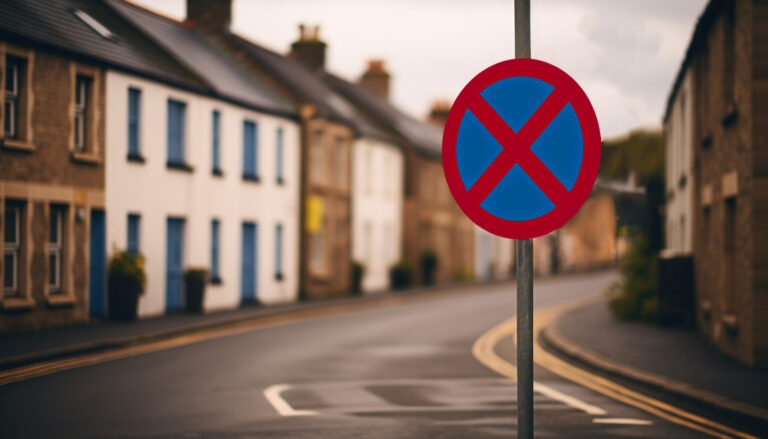What Does a No Stopping Sign Mean?

Traffic signs play a crucial role in regulating vehicular movement, ensuring road safety, and maintaining traffic flow.
Among the many signs, the “No Stopping” sign is particularly important.
It serves as a clear directive to drivers to refrain from stopping their vehicles, even for a short duration, in the designated area.
Understanding the meaning and implications of a no stopping sign is essential for responsible driving and fostering a safe road environment for everyone.
In this article, we will explore the significance of the no stopping sign, its legal implications, and the rationale behind its implementation.
Purpose of a No Stopping Road Sign
The “No Stopping” sign is a regulatory traffic sign designed to prohibit vehicles from coming to a stop within the specified area. This sign is often installed in locations where stopping is strictly prohibited to maintain the smooth flow of traffic, prevent obstructions, and ensure safety for pedestrians and other road users. Unlike the “No Parking” sign, which allows brief stops for loading or unloading, the no stopping sign requires drivers to keep their vehicles in constant motion while passing through the designated area.
The “No Stopping” sign is recognizable by its circular shape, red border, and a white symbol in the center. These circular signs and the symbol typically features a red line diagonally across a white car, conveying the message that vehicles are not allowed to stop at that location.
It is also fundamental to learn all types of road signs when practising for your driving test.
Legal Implications of Ignoring the No Stopping Sign
Ignoring any road signs isn’t wise, but ignoring the no stopping sign can have serious legal consequences, as it constitutes a traffic violation in most jurisdictions. Penalties for violating no stopping regulations may include fines, points on the driver’s license, or even towing of the vehicle in extreme cases. The severity of the penalty may vary depending on local traffic laws and the nature of the violation, so you should always take road traffic signs seriously.
Additionally, disregarding the no stopping sign can lead to hazardous situations on the road. Blocking traffic flow, obstructing emergency vehicles, or hindering the movement of pedestrians can result in accidents, injuries, and potential loss of life. Therefore, it is crucial for drivers to understand and adhere to the rules indicated by the no stopping sign to promote road safety and minimize potential risks.
Rationale behind No Stopping Zones
The implementation of no stopping zones is based on various factors related to road safety and traffic management. Some key reasons include:
A. Ensuring Traffic Flow: No stopping zones are commonly marked in areas where traffic congestion is likely to occur. These areas may include busy intersections, narrow roads, school zones, and major roadways. By preventing vehicles from stopping, traffic flow is maintained, reducing the chances of traffic jams and accidents.
B. Pedestrian Safety: No stopping zones are often established near pedestrian crossings, crosswalks, and school zones to ensure the safety of pedestrians. When vehicles stop in these areas, it can obstruct the view for both drivers and pedestrians, leading to potentially dangerous situations.
C. Emergency Access: No stopping zones are critical to ensuring unhindered access for emergency vehicles like ambulances, fire trucks, and police cars. In case of emergencies, these vehicles require clear paths to reach their destinations quickly and efficiently.
D. Public Transportation Efficiency: No stopping zones near bus stops and transit stations are crucial for the smooth operation of public transportation. Vehicles stopping in these areas can impede bus movements, leading to delays and inconvenience for passengers.
E. Sight Distances: No stopping zones are often established at locations with limited sight distances, such as sharp curves or intersections. Stopping in such areas can obstruct the view of other drivers, increasing the risk of collisions.

 5 star rating
5 star rating
